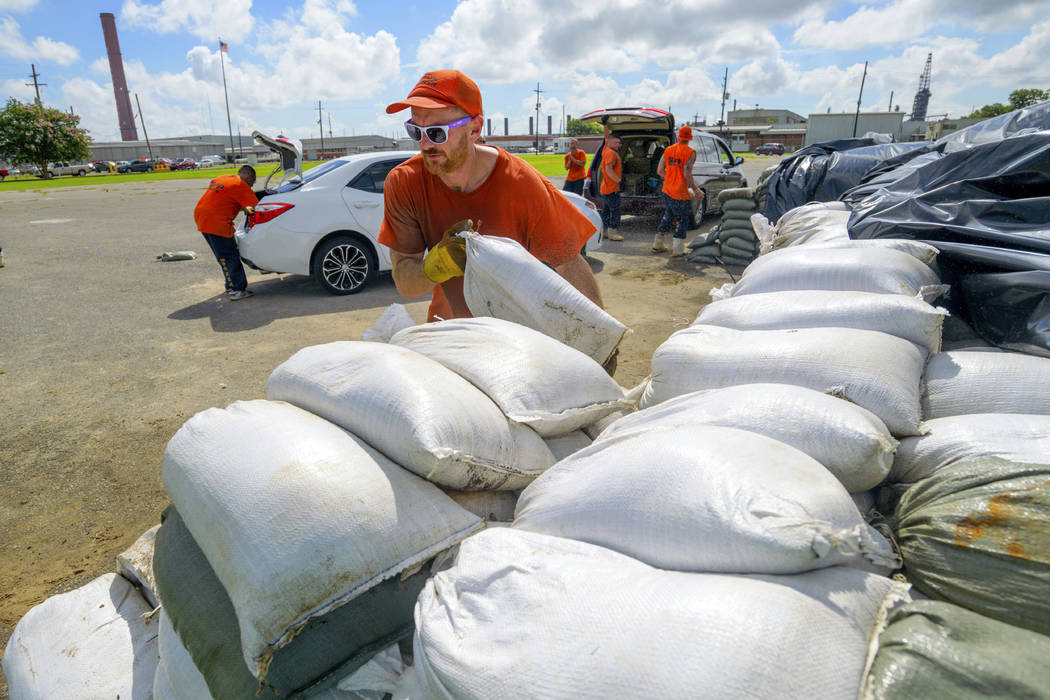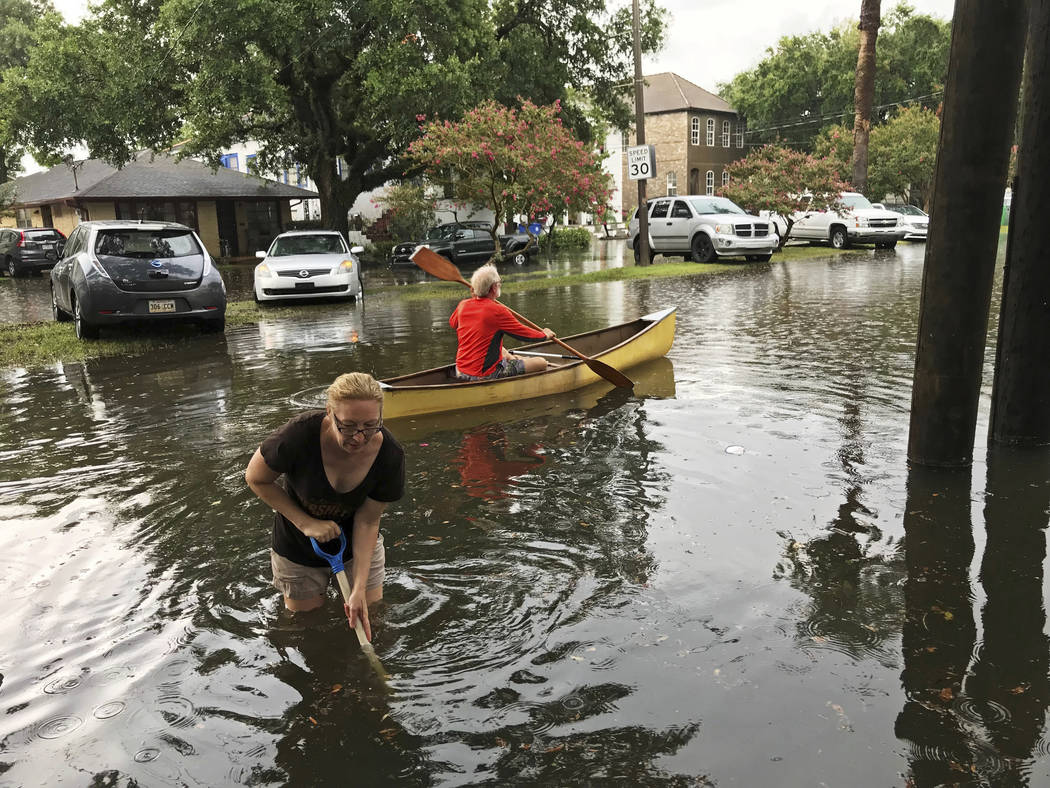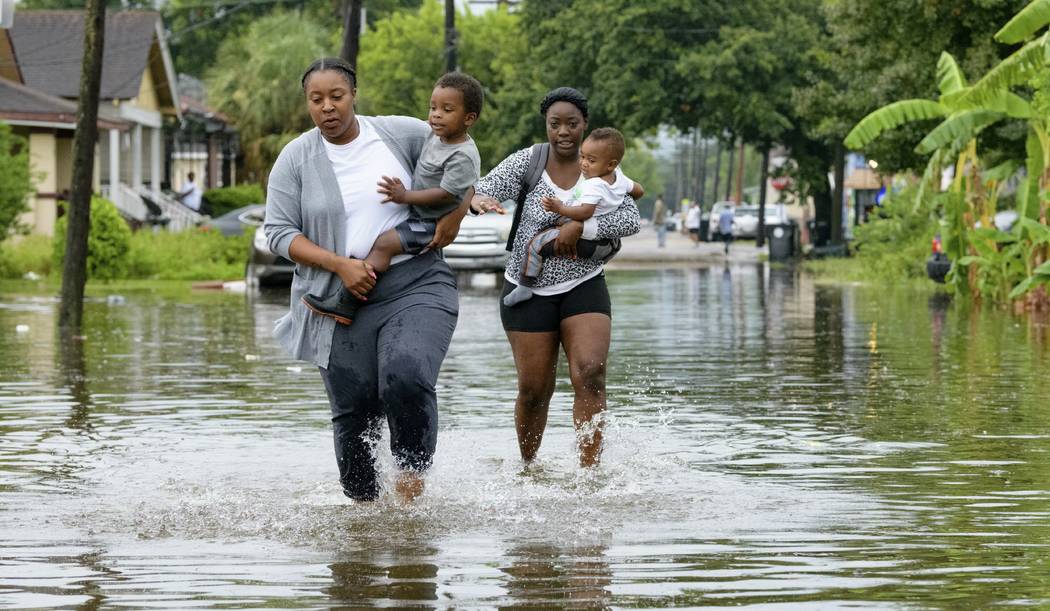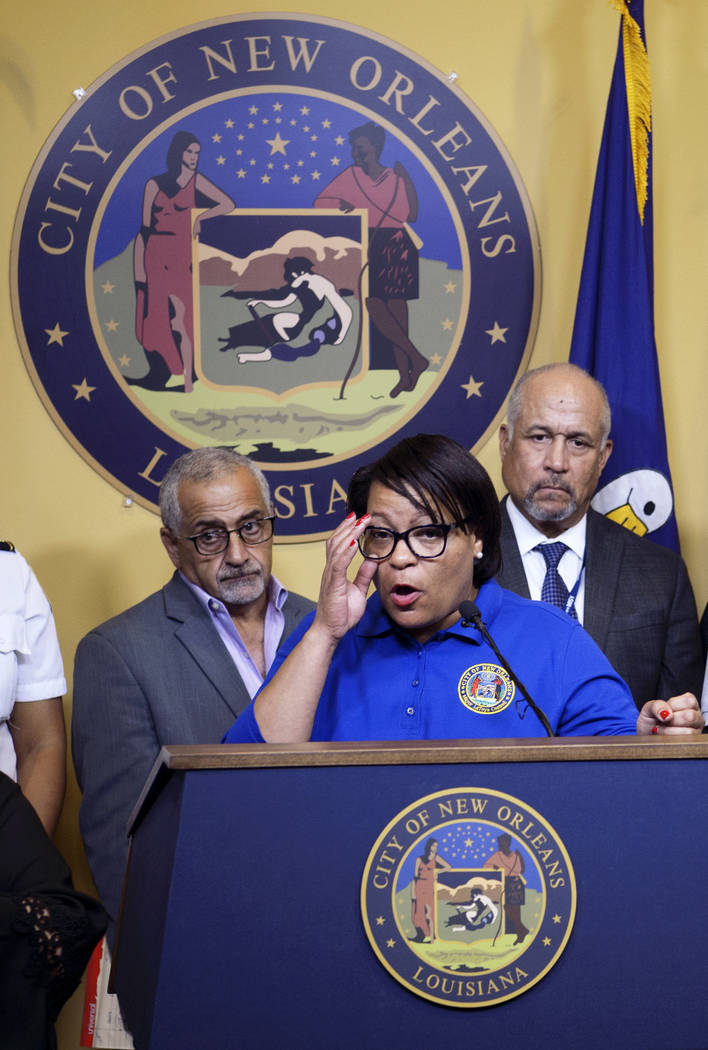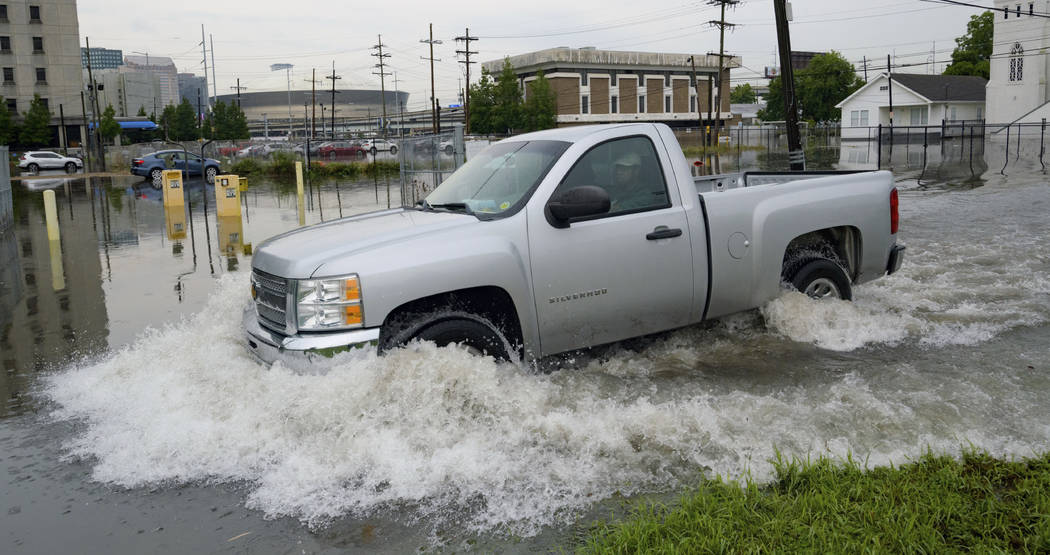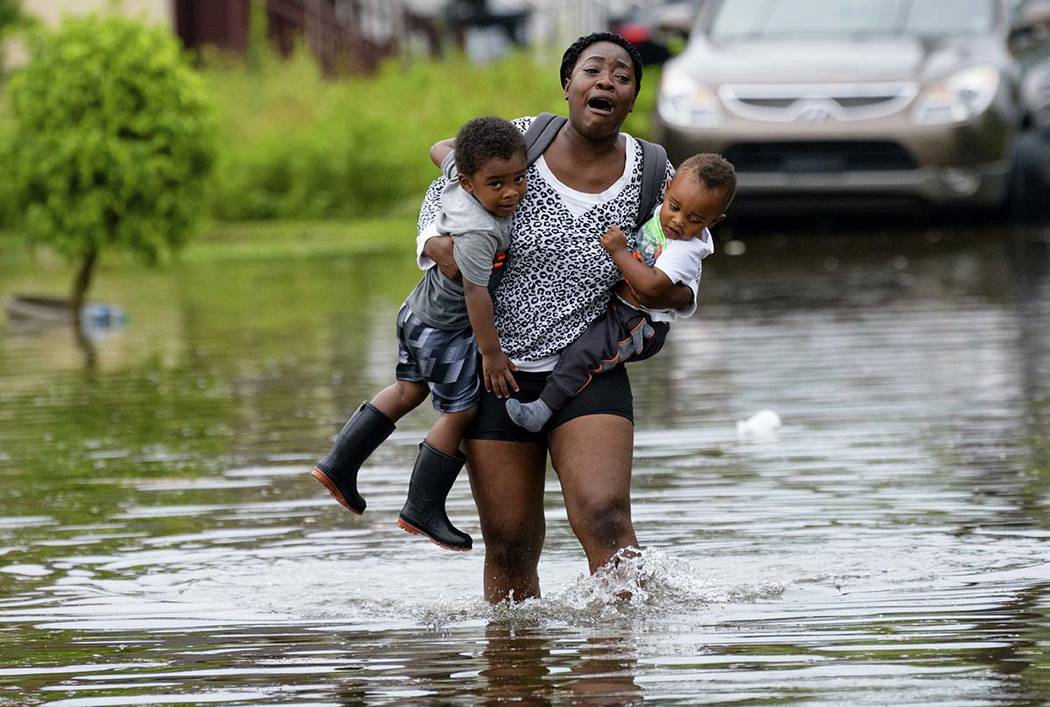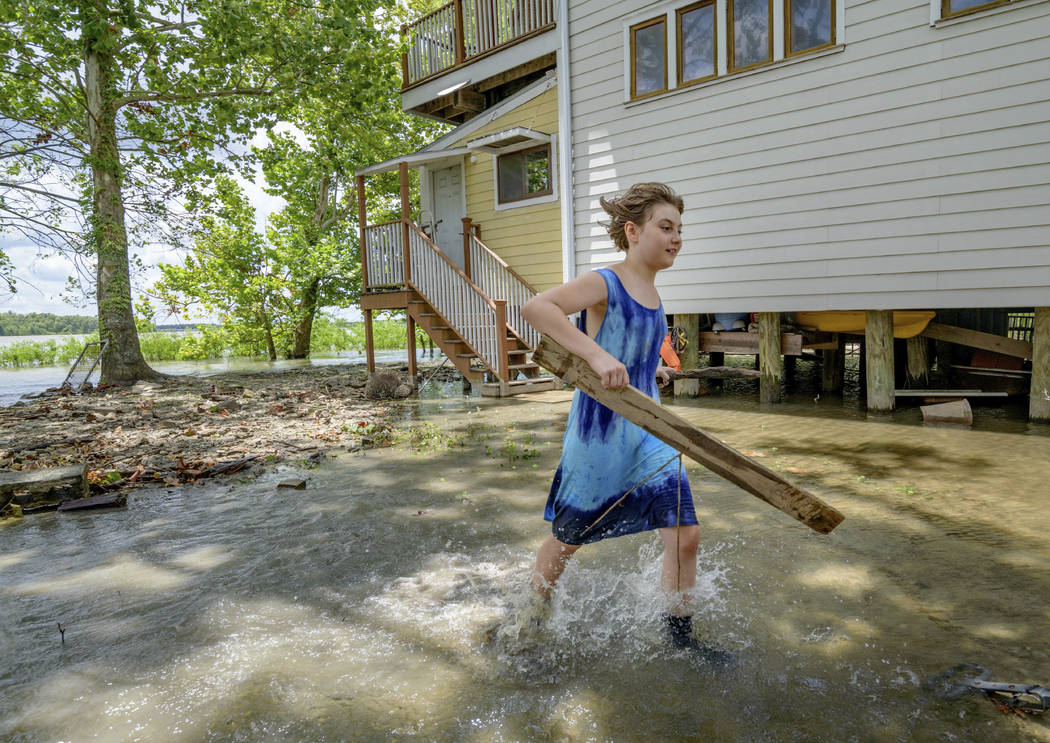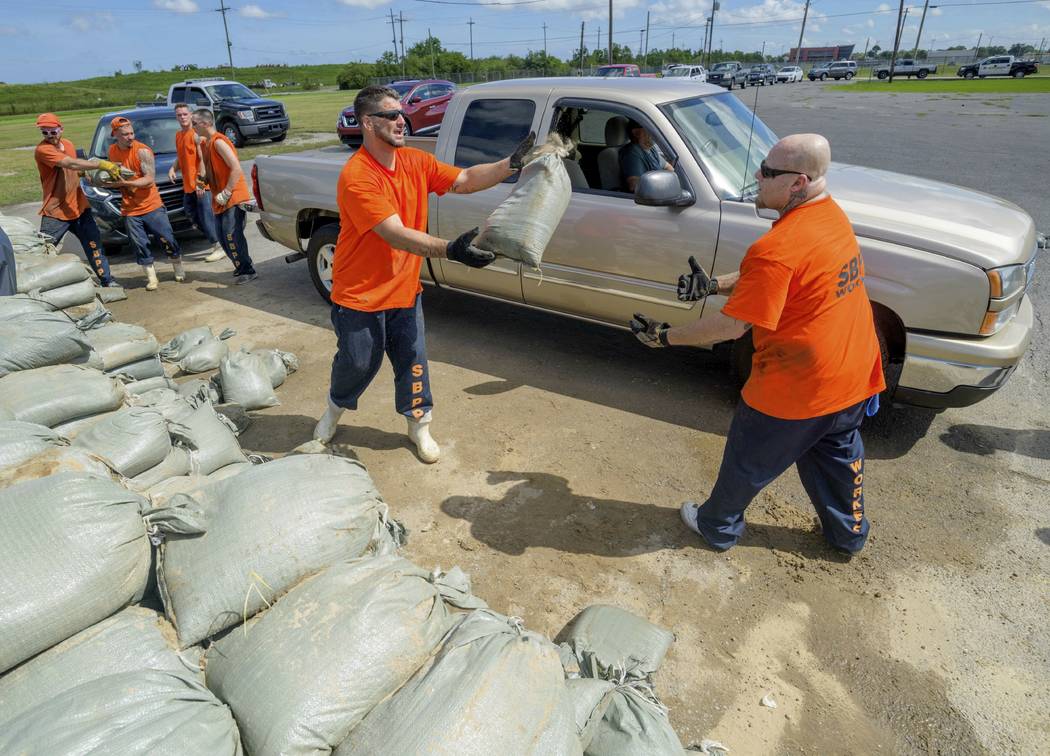New Orleans area braces for first hurricane of the season
NEW ORLEANS — Thousands of Louisianans broke out sandbags or fled to higher ground Thursday as Tropical Storm Barry threatened to turn into the first hurricane of the season and blow ashore with torrential rains that could pose a severe test of New Orleans’ improved post-Katrina flood defenses.
National Guard troops and rescue crews in high-water vehicles took up positions around the state as Louisiana braced for the arrival of the storm Friday night or early Saturday.
Barry could have winds of about 75 mph, just barely over the 74 mph threshold for a hurricane, when it comes ashore, making it a Category 1 storm, forecasters said.
But it is expected to bring more than a foot and a half of rain in potentially ruinous downpours that could go on for hours as the storm passes through the metropolitan area of nearly 1.3 million people and pushes slowly inland.
Louisiana Gov. John Bel Edwards, who declared an emergency earlier in the week as the storm brewed in the Gulf of Mexico, warned that the storm’s blow could form a dangerous combination with the already-high Mississippi River, which has been swelled by heavy rain and snowmelt upriver this spring.
“There are three ways that Louisiana can flood: storm surge, high rivers and rain,” Edwards said. “We’re going to have all three.”
He said authorities do not expect the Mississippi River to spill over its levees — something that has never happened in New Orleans’ modern history — but cautioned that a change in the storm’s direction or intensity could alter that.
As of Thursday evening, Barry was about 90 miles south of the mouth of the Mississippi, with winds around 45 mph. A hurricane warning was posted for a 100-mile stretch of Louisiana coastline just below Baton Rouge and New Orleans.
Southeast of New Orleans, authorities handed out sandbags and people piled into cars with their pets and began clearing out. Plaquemines Parish, at Louisiana’s low-lying southeastern tip, ordered the mandatory evacuation of as many as 10,000 people, and by midafternoon the area was largely empty.
Justice of the Peace David McGaha waited with his mother, his wife and their 15-year-old son and 11-year-old daughter for a ferry so they could evacuate to his mother’s house in Alabama.
“If the river wasn’t so high, we’d probably stay. You have to worry about the water that’ll be pushing against those levees,” he said. “They made a lot of improvements to the levee, but they haven’t completed all the projects.”
Clarence Brocks, 65, a Plaquemines Parish native and volunteer fire chief who lost his home to Hurricane Katrina 14 years ago and had to start over from scratch, found himself packing up again.
“We’re in between two major bodies of water and the only thing protecting us is two, 18-foot levees, and one of them failed already for Katrina,” he said.
The National Hurricane Center said as much as 20 inches of rain could fall in parts of eastern Louisiana, including Baton Rouge, and the entire region could get as much as 10 inches. The New Orleans area could get 10 to 15 inches through Sunday, forecasters said.
Meteorologist Benjamin Schott said the chief concern is not the wind: “Rainfall and flooding is going to be the No. 1 threat with this storm.”
New Orleans Mayor LaToya Cantrell said that the pumping system that drains the city’s streets is working as designed but that Barry could dump water faster than the pumps can move it.
“We cannot pump our way out of the water levels … that are expected to hit the city of New Orleans,” she warned.
However, the city did not plan to order evacuations because Barry was so close and because it was not expected to grow into a major hurricane. Officials instead advised people to keep at least three days of supplies on hand and to keep their neighborhood storm drains clear so water can move quickly.
Hurricane Katrina caused catastrophic flooding in New Orleans in 2005 and was blamed altogether for more than 1,800 deaths in Louisiana and other states, by some estimates.
In its aftermath, the Army Corps of Engineers began a multibillion-dollar hurricane-protection system that isn’t complete. The work included repairs and improvements to some 350 miles of levees and more than 70 pump stations that are used to remove floodwaters.
The National Weather Service said it expects the Mississippi to rise to 19 feet by Saturday morning at a key gauge in the New Orleans area, which is protected by levees 20 to 25 feet high.
Associated Press reporters Chevel Johnson in New Orleans and Janet McConnaughey and Sarah Blake Morgan in Plaquemines Parish contributed to this report.



